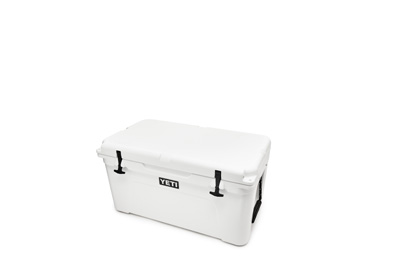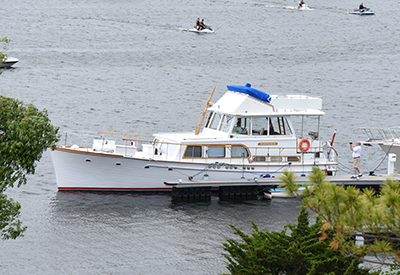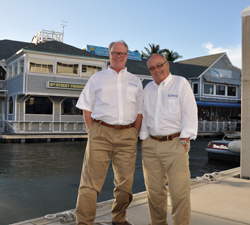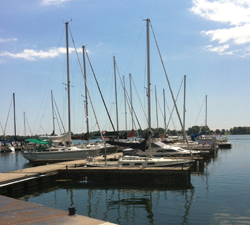Cruising Without Refrigeration?!!
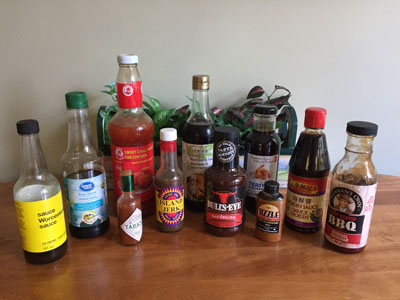
By Katherine Stone
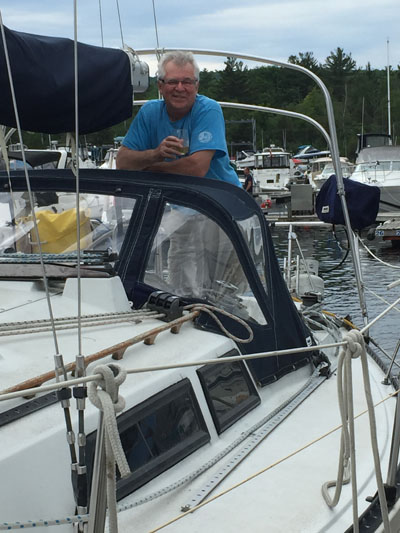 Yikes! No boat refrigeration? You’ve Got to be Kidding me!! But then again, true campers don’t use it either, so it’s got to be ok, right?
Yikes! No boat refrigeration? You’ve Got to be Kidding me!! But then again, true campers don’t use it either, so it’s got to be ok, right?
Those Galley Guys get all the good articles and the delicious food and drink. So, standing up for women’s rights, a certain Galley Gal decided to rant on about one of her pet peeves. So here we go…..
If there’s one thing that drives me nuts while cruising on an older boat, (which many of us have), is the small cooler and the fact that everything I want is ALWAYS at the BOTTOM of the icebox and has managed to get underneath the large block of ice! Not only is it under the block of ice, but it’s been squished and has leaked out all over the bottom of the cooler.
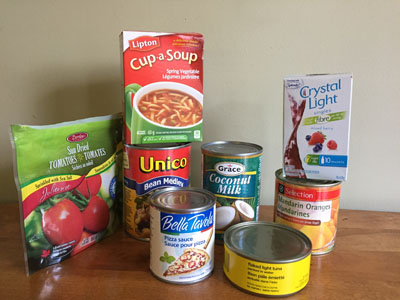
So, in-between checking out all the new boats at the 2018 United States in-the-water Sailboat Show this fall, I stumbled upon a booth run by Carolyn Shearlock, the author of The Boat Galley Cookbook. This woman is a genius in the galley and has not only written a great cookbook and set up a great website, but she also has given great advice on cruising, on chartering, on buying a boat and gear, and on living aboard for extended periods of time. When I saw her newly released book, Storing Food Without Refrigeration, I bought a copy without a second thought and was not disappointed. Not only does she share her advice and experience, but she does so for practical short and long cruising adventures as well as for live-aboards.
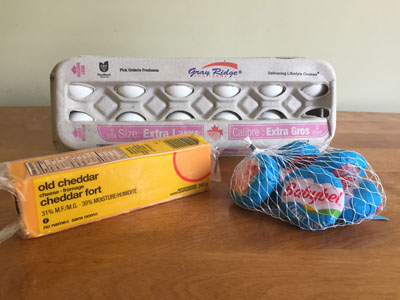
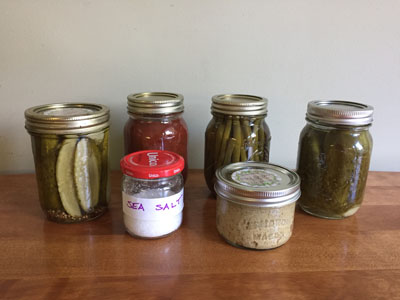
So here in a nutshell are my take-aways from the book that suit my needs as a short cruise adventurer. These really “opened” up my icebox storage area. Of course, she has many tips to share with cruisers who are away for longer periods of time, but they require much more planning and preparation which often times I do not have. I know many of our readers don’t either.

The first things that caught my eye were all the items that we might normally keep in a refrigerator because the outside of the container says, “Keep Refrigerated After Opening”. Eliminating these foods, and the containers that they are packaged in from your icebox relieves a tremendous amount of space. These items include: Peanut butter, jam/jelly, mustards, ketchup, relishes, pickles, BBQ sauce, soy sauce, hot sauces (like Sriracha), Worchester sauce, A1, honey, molasses and chocolate syrup. She suggests these can be kept for months without refrigerating, even in tropical climates.
The key, and Carolyn stresses this over and over in the book, is to ensure that contamination is eliminated. This means for example, the knife that you just used to spread the strawberry jam onto your toast, must not go back into the jar. It becomes contaminated. Always have a clean utensil that enters a container. If your finger touches the opening you have contaminated it. So squeeze bottles or small containers are ideal, because you can’t put your used knife or finger back in the jar. Carolyn calls it the “clean spoon” rule that must ALWAYS be adhered to religiously. I can live with that, and it certainly makes a lot of sense and is good practice, even off the boat!
Another big hint that she offers is to buy food in small containers so that once it’s used for a meal, there are no worries about food going bad, because it was all used in one sitting. I have now put all my spices into very small, study, plastic, ziplock bags that are easy to store, stay fresh and don’t take up much space.
Cheese was also an interesting topic. Most Canadians put all their cheeses in the refrigerator all the time. However, on a boat, the best cheeses to take along, and that do not require refrigeration, are those that are vacuumed in plastic or encased in wax and the harder the cheese, the better. Once they are crumbled or shredded their life expectancy outside the icebox goes down sharply. Carolyn has great storage advice in her book for other types of cheese too, from wrapping it in wax paper and/or cheesecloth to storing it in oil. My preferred cheese on the boat are the tiny Babybels which are also easy to eat and now I realize won’t be caught under that large block of ice, because they don’t need to be refrigerated.
Eggs are another food item that almost all Canadians keep in the frig. Of course, buying unrefrigerated eggs to start with will last the longest. But you can also store refrigerated eggs outside the cooler too. If you buy your eggs refrigerated, keep them on the counter until they reach room temperature. Then carefully inspect them for any cracks and carefully wipe off the condensation to help eliminate mold on the shell. Storage in a Styrofoam container is much better than a cardboard one (although I realize that this is not the more eco-friendly type of packaging), as it eliminates the chance for bugs to find shelter in the cartons. Flipping the carton every day or so helps to block bacteria from getting on the inside by always keeping the membrane moist. Again, Carolyn stresses that if the egg is cracked don’t use it! For the true test put the egg in the glass of water. If it doesn’t float it’s bad and you probably won’t want to open it, as you will regret it – trust me – the smell will hit the stink-o-meter like that of a skunk!
Canned meats are also great to keep on your shelf and easy to use and store. Carolyn provides wonderful suggestions on how they can be used and prepared to get the maximum taste and enjoyment out of them. It is easy to find canned tuna, salmon, crab, shrimp, clams, chicken, turkey and roast beef at just about any grocery store. Her suggested recipes include easy to prepare crab cakes, quiche, paellas, stir fries, pasta alfredo and primavera, to chili, spaghetti, chowders, enchiladas and beef stroganoff.
The book is loaded with great advice and wonderful tips on many other foods including doing your own canning (if you have the time and inclination), to brining your butter, which is actually pretty easy! At the end of the book are some Appendixes that have some of Carolyn’s recipes for salad dressings, canning, ricotta cheese, no bake cookies, and also equivalent measurements and substitutions. She also leaves you with some “Final thoughts” which reminds us that refrigeration has only been around for 100 years. She certainly has changed my boat provisioning methods and helped to reduce my angst about one of my pet peeves by reading her book.
As one of her reviewers said, “I’ve been feeling discouraged about not having refrigeration (on our boat)…. Your book has me feeling excited about trying some new things. Thank you so much!”
Carolyn Shearlock’s book, Storing Food Without Refrigeration is $14.99 US
Published by Blue River Press ISBN 978-1-68157-147-8

